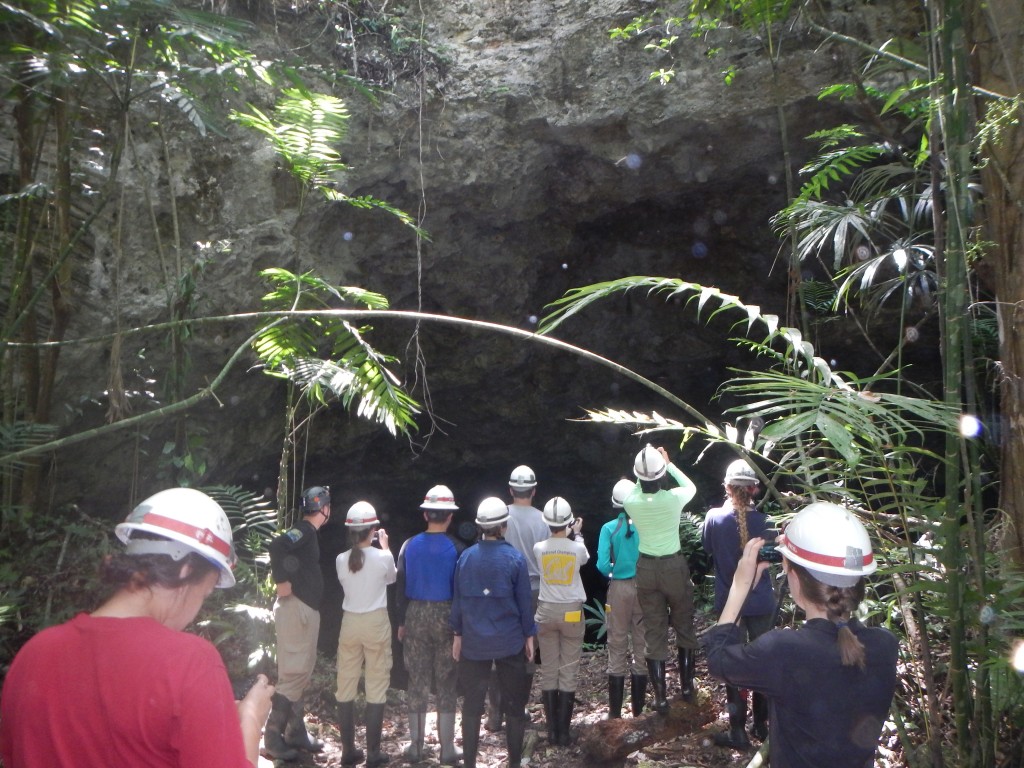Today we started off by summarizing the results from our experiments yesterday about Cecropia and ant interactions. My group ended up with negative results. We didn’t find any evidence of young Cecropia mimicking other plants. We did notice some differences between juvenile and adult trees, such as red petioles (the stems of leaves) and slightly longer trichomes (the tiny hairs on plants). However, we weren’t able to conclusively determine that those differences had an adaptive role. One group tested the toughness of juvenile and adult leaves and found that juvenile leaves were tougher. This could be adaptive because it would make it more difficult for herbivores to eat the leaves. If the project was continued, it would be beneficial to see if herbivores preferred younger or older leaves.
We also were able to visit the cave at Las Cuevas. The cave was a part of Mayan ceremonies, and there is still evidence of their presence. There are pottery shards throughout the cave system and the cave is built up in some areas. Platforms were built near the entrance and some spaces between chambers were made to be narrower. The whole history behind the cave is extremely interesting. The caves also had some wildlife. We saw at least two species of bats, millipedes, and a species of scorpion with long legs and no tail. One of the best aspects about the cave was how undeveloped it was. I’m not used to visiting preserved caves that haven’t been commercialized. It was cool to feel like I was one of the first to visit the cave, even though many, many people have visited it before me.

My favorite trees today were the big trees that we commonly see around the Chiquibul. The cedar (Cedrela odorata) can be 20-30m tall. Right now it doesn’t have leaves, but it has some wooden seed pods that are still attached to the branches. The seed pods look like 5-petaled flowers – they’re very pretty. Another big tree is the ceiba (Ceiba pentandra). When it is mature, its bark is very smooth and it can reach 60-70m. It has been difficult for me to identify ceiba from their leaves because the trunks reach so high into the canopy.

We only have two more full days at LCRS, so we’ll have to make them count!
